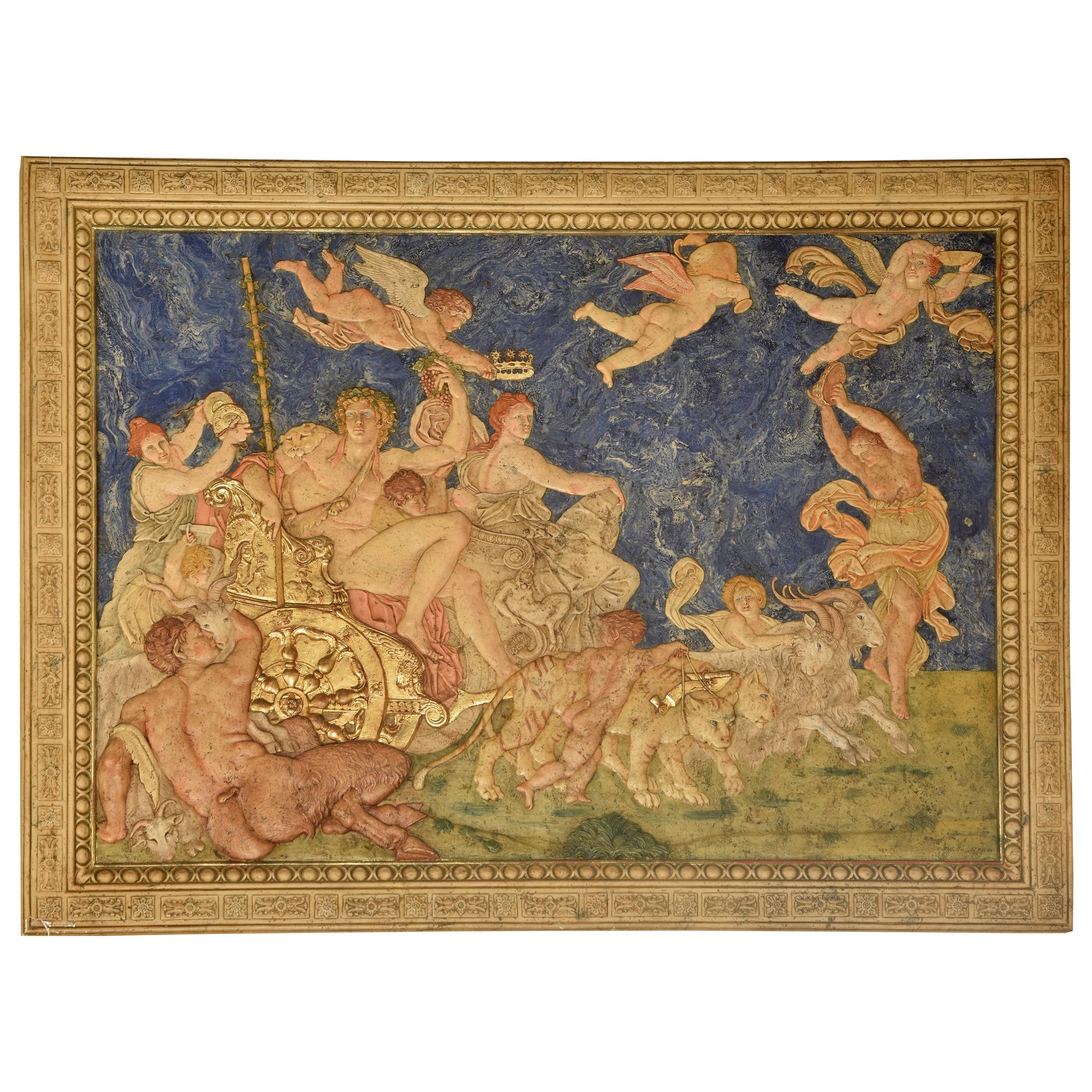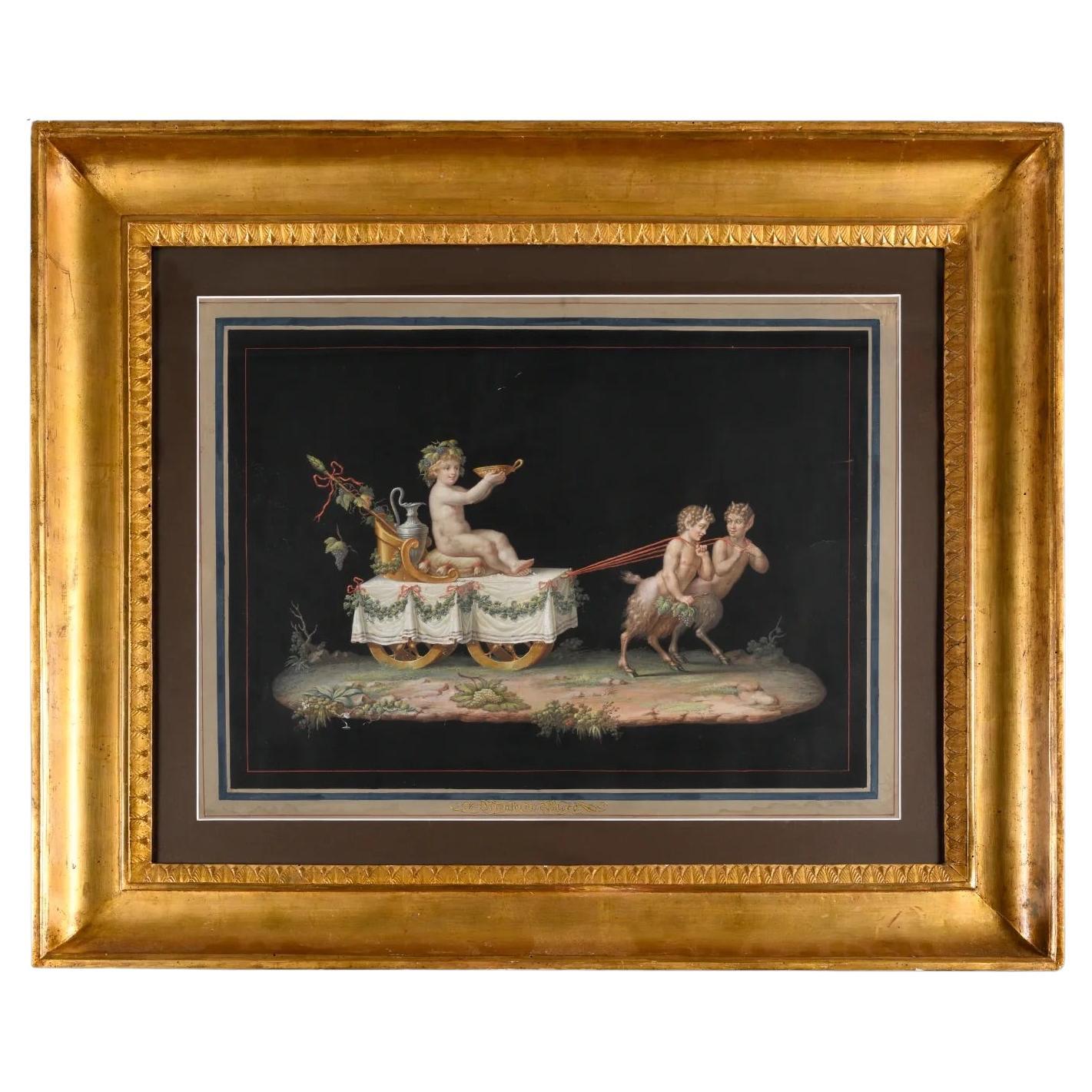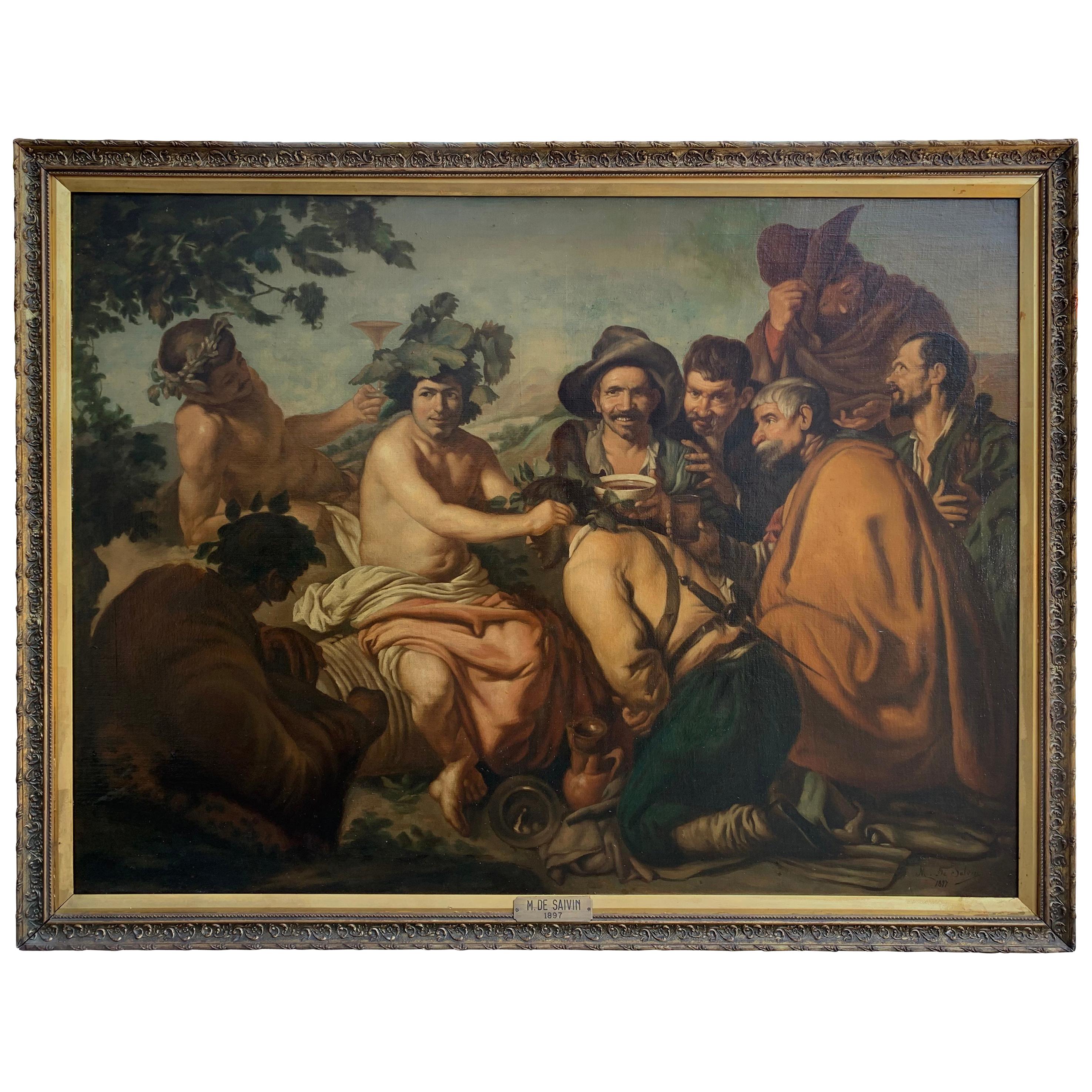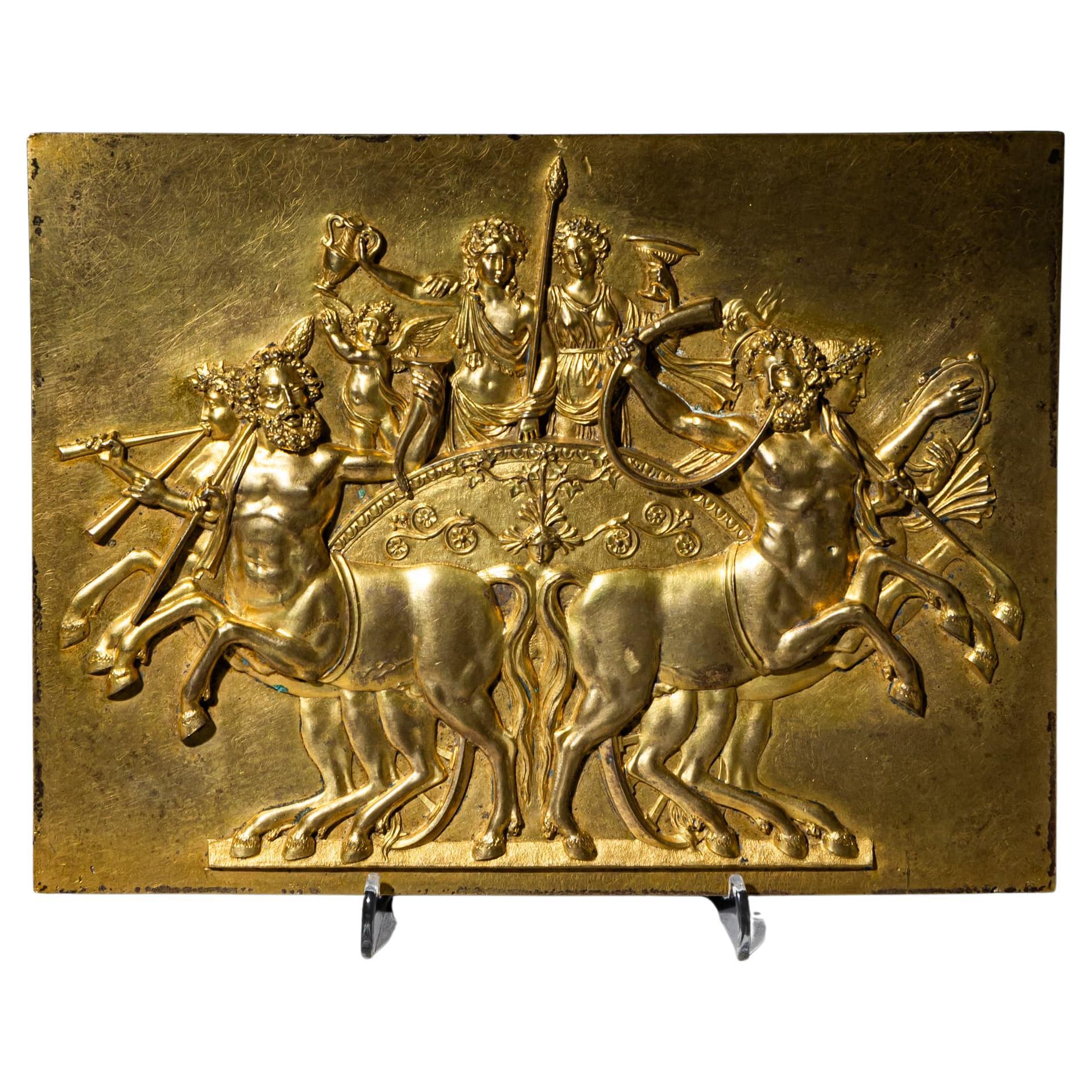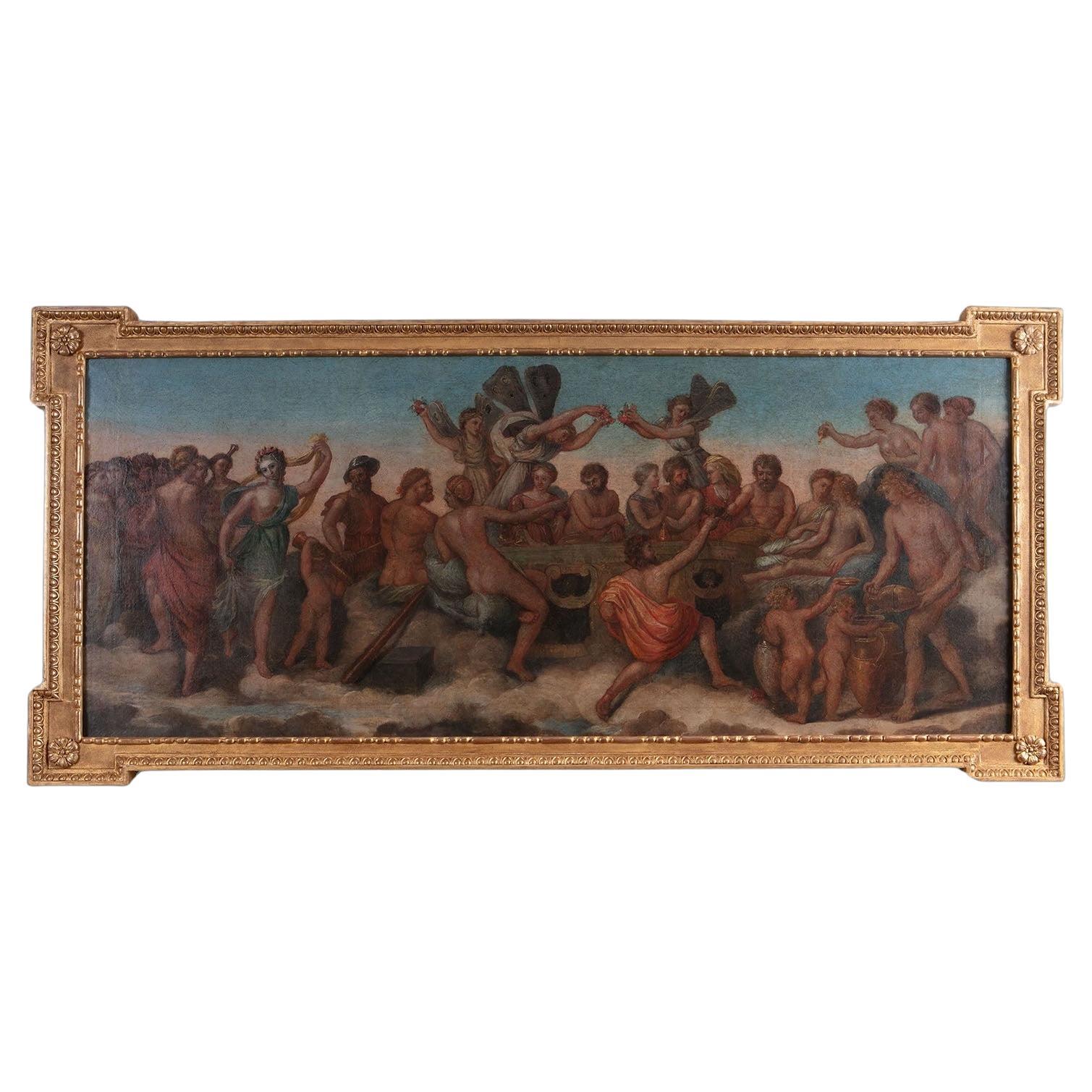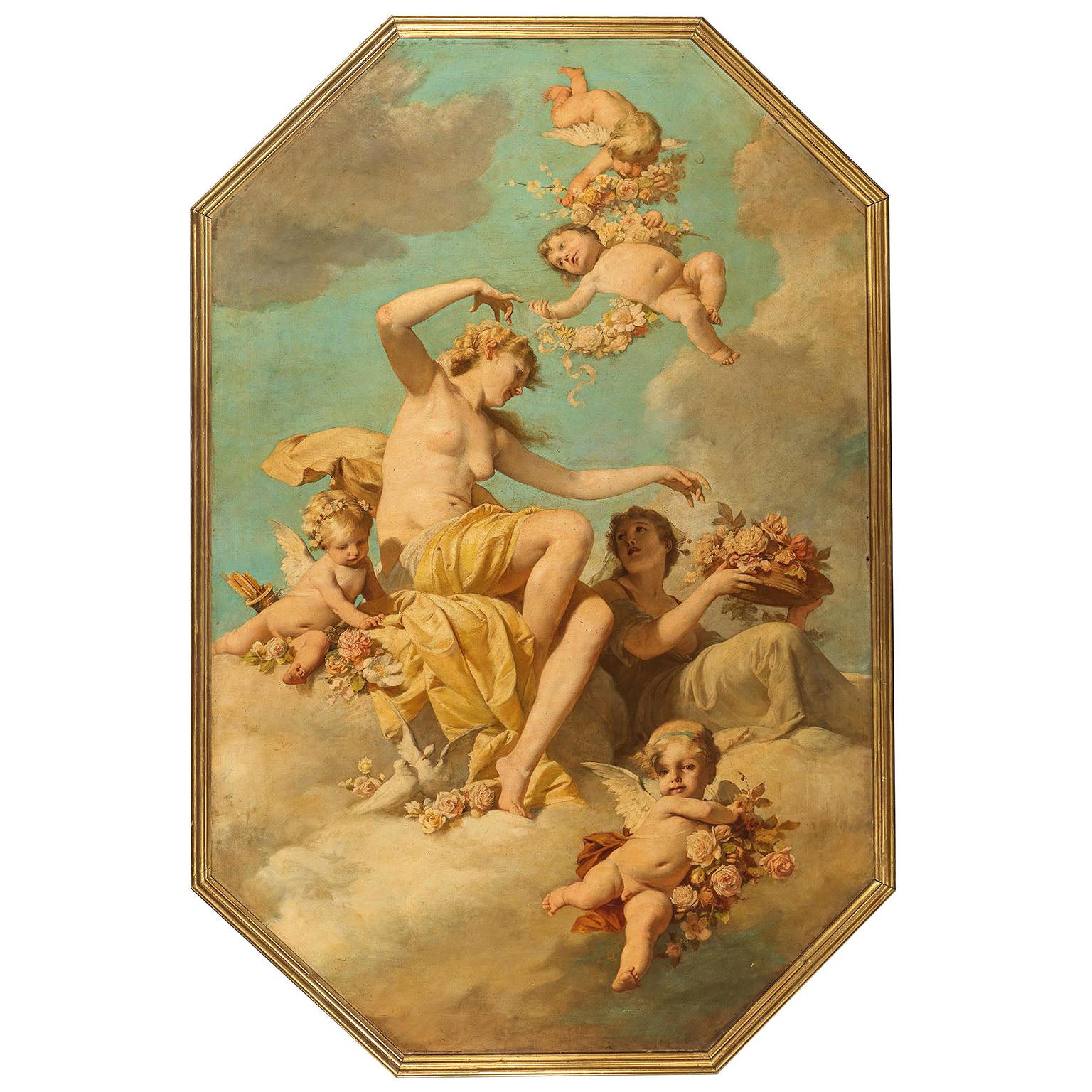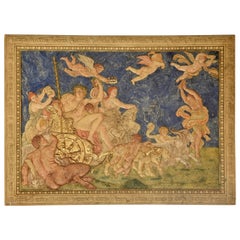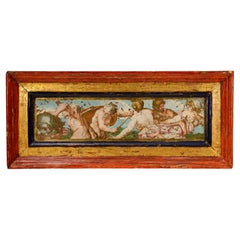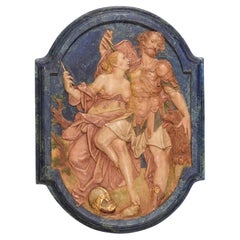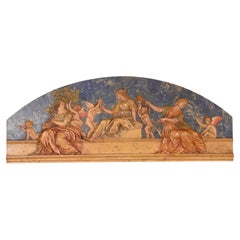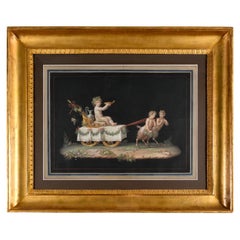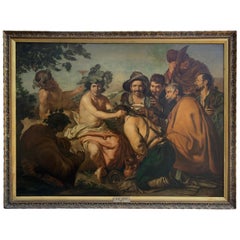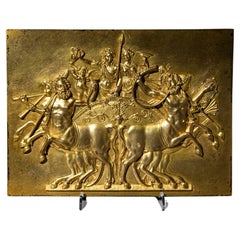Items Similar to "Triumph of Bacchus and Ariadne". 20th century, after Annibale Carracci
Want more images or videos?
Request additional images or videos from the seller
1 of 5
"Triumph of Bacchus and Ariadne". 20th century, after Annibale Carracci
$1,316.95
£977.18
€1,100
CA$1,839.32
A$1,994.78
CHF 1,047.73
MX$24,230.13
NOK 13,110.74
SEK 12,344.50
DKK 8,376.51
About the Item
"Triumph of Bacchus and Ariadne" after Annibale Carracci's model. Modeled alabaster
The classical deities Bacchus and Ariadne have been represented in a chariot, accompanied by a procession made up of erotes, satyrs, maenads, Pan and Silenus, following a fragment of the well-known fresco of one of the vaults of the Farnese Palace in Rome, painted by Annibale Carracci (Bologna, 1560- Rome, 1609) between 1597 and 1600, considered one of the most important works of the Roman-Bolognese Renaissance Classicism."
Size: 143,5x3x109 cm
International Buyers – Please Note: for those articles that need Export Permits (those older than 100 years), the obtaining of the Permit will be processed without additional expenses, but the period for the obtention of it may vary from 10 to 35 days.
- Dimensions:Height: 42.92 in (109 cm)Width: 56.5 in (143.5 cm)Depth: 1.19 in (3 cm)
- Style:Other (Of the Period)
- Materials and Techniques:
- Place of Origin:
- Period:
- Date of Manufacture:20th Century
- Condition:Wear consistent with age and use. Minor losses. Minor fading.
- Seller Location:Madrid, ES
- Reference Number:Seller: ze4141stDibs: LU2951338331342
About the Seller
4.9
Vetted Professional Seller
Every seller passes strict standards for authenticity and reliability
Established in 1985
1stDibs seller since 2017
350 sales on 1stDibs
Typical response time: 20 hours
- ShippingRetrieving quote...Shipping from: MADRID, Spain
- Return Policy
Authenticity Guarantee
In the unlikely event there’s an issue with an item’s authenticity, contact us within 1 year for a full refund. DetailsMoney-Back Guarantee
If your item is not as described, is damaged in transit, or does not arrive, contact us within 7 days for a full refund. Details24-Hour Cancellation
You have a 24-hour grace period in which to reconsider your purchase, with no questions asked.Vetted Professional Sellers
Our world-class sellers must adhere to strict standards for service and quality, maintaining the integrity of our listings.Price-Match Guarantee
If you find that a seller listed the same item for a lower price elsewhere, we’ll match it.Trusted Global Delivery
Our best-in-class carrier network provides specialized shipping options worldwide, including custom delivery.More From This Seller
View All"Triumph of Bacchus and Ariadne". 20th century, after Annibale Carracci
By Annibale Carracci
Located in Madrid, ES
"Triumph of Bacchus and Ariadne" after Annibale Carracci's model. Polychrome resin.
The classical deities Bacchus and Ariadne have been represente...
Category
20th Century European Other Decorative Art
Materials
Resin
Tritons defending Nereids. Oil on glass (reverse). Possibly Italian school...
Located in Madrid, ES
Tritons defending Nereids. Oil on glass (reverse). Possibly Italian school (perhaps Naples), late 16th 17th century.
It has some issues.
Framed glass plate with a painting, probabl...
Category
Antique 17th Century European Other Paintings
Materials
Other
Odysseus and Circe, relief. Modeled alabaster. 20th century
Located in Madrid, ES
Odysseus and Circe, relief. Modeled alabaster. 20th century, following the model of SPRANGER, Bartholomäus (1546-1611).
Panel with figurative relief and a fine frame around it made ...
Category
20th Century Spanish Other Decorative Art
Materials
Other
Virtues, relief. Molded and polychrome alabaster. 20th century, after Sanzio.
Located in Madrid, ES
Virtues, relief. Molded and polychrome alabaster. 20th century, Inspired by models by SANZIO, Rafael or Raffaello (1483-1520).
Relief with figurative decoration made of alabaster molded with polychrome inspired by the fresco of “The Cardinal and Theological Virtues” on the south wall of the Signature Room in the so-called “Raphael rooms” because they were painted by Rafael Sanzio...
Category
20th Century Spanish Renaissance Revival Decorative Art
Materials
Other
Venus and Mercury, relief. Molded alabaster. 20th century, after Spranger
Located in Madrid, ES
Venus and Mercury, relief. Molded alabaster. 20th century, Inspired by the model of SPRANGER, Bartholomäus (1546-1611).
Panel with figurative relief and a fine frame around it made ...
Category
20th Century Spanish Renaissance Revival Decorative Art
Materials
Other
"Wedding of Tethys and Peleus", Oil on Canvas, School of Madrid, Spain
Located in Madrid, ES
"Wedding of Tethys and Peleus". Oil on canvas. School of Madrid, 17th century. Corte, Juan de la (Antwerp, circa 1585 - Madrid, 1662) circle.
This work describes the weddings of the Nereid Thetis and the prince Peleo, parents of Achilles. It was celebrated on Mount Pelion, and all the deities came, although Eris, the goddess of discord, was not invited. In revenge, she threw a golden apple in which she said "for the most beautiful", that caused the dispute between Athena, Aphrodite and Hera that led to the Trial of Paris, to finally bring about the Trojan War. The banquet is depicted with a composition worked in depth, located in a rich interior of classical architecture illuminated by the light of Apollo, which is situated at the far end of the viewer. At the head of the table, in the foreground, appears Zeus, accompanied by the eagle and Hera, queen of the gods, to his left. In the lower right corner we see a group of satyrs serving the wine, accompanied by rich metal vessels worked with a detailed and descriptive brushstroke. The rest of the gods appear clearly differentiated, with Athena in the foreground to the right and, following an agile rhythm in zigzag, typically baroque, Aphrodite with Eros, Hermes and the grooms, to the left, and to the right Poseidon. Formally it is a work perfectly framed within the 17th century school of Madrid, developed around the court.
Thus, we see a sumptuous, allegorical classicist baroque, where the studies of light and color are especially relevant, revealing the exalted and luminous tone typical of this school's maturity. In particular, we can relate this painting to the circle of Juan de la Corte, painter of Flemish origin. We know nothing of his first formation today, for Palomino's assertion of his birth in Spain was documented, quoting in his testament that he was born in Antwerp. Also conserved documents in which the painter declares his apprenticeship in Flanders, where "it exerted his office by many years". For all this he has been associated with Flemish artists of the time who, due to personal knowledge or the study of his works, strongly influenced the configuration of his personal language. We know of his establishment in Spain at least since 1613. His work at the court encouraged him to ask for the place of royal painter who left vacant Bartolomé González...
Category
Antique 17th Century Spanish Baroque Paintings
Materials
Canvas
You May Also Like
The Triumph of Bacchus by Michelangelo Maestri
By Michelangelo Maestri
Located in PARIS, FR
Michelangelo Maestri.
The triumph of Bacchus called The genius of Bacchus.
Gouache on paper, 18th century Roman frame.
Early 19th century.
H. 70,5 - L. 84,5 cm.
The compositions of ...
Category
Antique Early 1800s Italian Renaissance Paintings
Materials
Paper
"The Triumph of Bacchus" after Diego Velázquez, Signed M. De Saivin 1897
By Diego Velã¡zquez
Located in Tarzana, CA
The Triumph of Bacchus" late 19th century oil painting on canvas after Diego Velázquez.
Signed and dated: M. De Saivin, 1897
Dimensions:
Ca...
Category
Antique 1890s Spanish Paintings
Materials
Canvas, Wood
Relief “Triumph of Bacchus”, France, First Quarter of the 19th Century
Located in Greding, DE
Gilt bronze relief depicting the “Triumph of Bacchus,” created in France during the first quarter of the 19th century. The composition is based on the famous ancient cameo Triumph of...
Category
Antique Early 19th Century French Neoclassical Decorative Art
Materials
Gold, Brass
MARRIAGE OF CUPID AND PSYCHE OIL ON CANVAS in Giltwood Kent Style Frame
Located in Reepham, GB
This oil on canvas is a meticulous reproduction of Giovanni Francesco Penni’s “Marriage of Cupid and Psyche” fresco (1517-18) from Villa Farnesina, Rome. Framed in an intricately car...
Category
Antique Early 19th Century Decorative Art
Materials
Paint
Fine 19th Century Oil on Canvas "Triumph of Flora" Attr. Ferdinand Wagner II
By Ferdinand Wagner II 1
Located in Los Angeles, CA
A very fine and large 19th century Louis XV style Whimsical Neoclassical Revival style Oil on Canvas "The Triumph of Flora" attributed to Ferdinand Wagner II (German, 1847-1927), school of François Boucher (French, 1703-1770). The impressive artwork depicting a semi-nude Flora hovering through the clouds surrounded by playful cupids, cherubs, love doves and a seated maiden, within white and grey clouds, offering her Spring flower bouquets and floral wreaths, within a banded giltwood frame. Note: Previously used as a ceiling painting. Unsigned, Circa 1870.
Measures: Canvas height: 91 3/4 inches (233 cm)
Canvas width: 59 inches (150 cm)
Frame height: 61 3/8 inches (155.9 cm)
Frame width: 93 1/2 inches (237.5 cm)
Depth: 2 3/8 inches (6 cm)
Ferdinand Wagner II (German, 1847-1927) was the son of Passau Ferdinand Wagner Senior, a teacher at a vocational art school who began training him professionally at a young age. After traveling to Italy in 1867-1868, he continued with his art studies at The Munich Academy of Arts led by Peter Von Cornelius and Julius Schnorr Von Carolsfeld...
Category
Antique 19th Century German Neoclassical Revival Paintings
Materials
Giltwood, Canvas
'Bacchanal', Mid-century Pompeii, Roman Mythology, Bacchus, Neo-classical
By Giovanni Gallo
Located in Santa Cruz, CA
Signed lower right, 'Gallo Giovanni' for Giovanni Gallo (Italian, 20th century) and dated 1954.
Titled lower left, 'Eseguito a Pompei, 'Trionfo di Bacco'' (Done in Pompeii, 'Triumph...
Category
1950s Nude Drawings and Watercolors
Materials
Paper, Gouache
More Ways To Browse
Pantou Ceramics
Paul Lambert
Steer Skull
Surgical Instruments Used
Tribal Wooden Wall Art
Van Rossum
Vintage Nursery Wall Art
Vintage Santa Wall Art
Zodiac Tile
1800 Antique Plaster Wall Art
African Framed Textiles
Antique Bone Fan
Antique Brass Wall Decor
Antique Bubble Glass Frame
Antique Hotel Key
Antique Sign Bracket
Antique Vegetable Prints
Bas Relief Framed Art
